AI-Powered Health Solutions for Seniors
Many assume older adults struggle with new innovations, but recent data tells a different story. Over 50% of Americans aged 65+ recognize tools like ChatGPT, proving technology adoption isn’t limited by age. This shift challenges outdated stereotypes and opens doors for meaningful advancements in care.
Cutting-edge tools now offer tailored support for managing chronic conditions, medication schedules, and even social connections. These systems learn individual patterns to provide personalized recommendations, moving healthcare from crisis response to early prevention. Imagine getting alerts about potential health risks before symptoms appear!
Developers prioritize simplicity, creating interfaces with clear visuals and voice commands. This approach helps bridge the gap between complex systems and users unfamiliar with digital platforms. Healthcare providers increasingly partner with tech experts to build solutions that respect the unique needs of aging populations.
Key Takeaways
- Over half of older Americans know about advanced tools like ChatGPT
- Personalized care systems detect health issues earlier
- Intuitive designs make technology accessible to all skill levels
- Collaborations between doctors and developers improve outcomes
- Proactive approaches replace traditional reactive care models
Innovations in AI-Powered Senior Care
Cutting-edge tools are transforming how we support aging populations. These solutions blend smart design with practical features, creating safer environments while preserving independence.
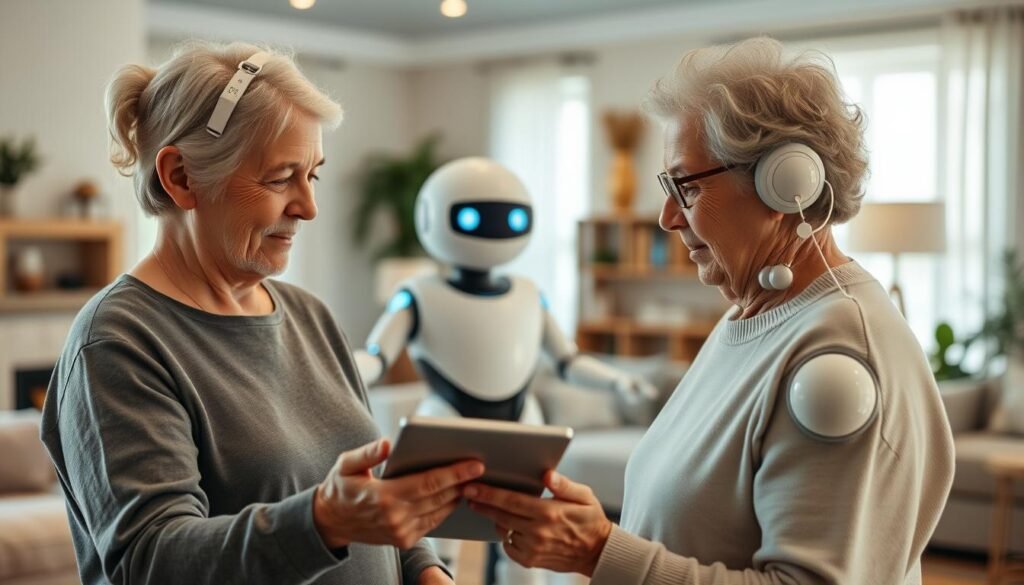
Tailored Treatment Approaches
Custom care plans now evolve with individuals’ needs. Systems analyze medical histories and preferences to adjust treatments automatically. One platform reduces medication errors by 40% through real-time interaction checks and voice-activated reminders.
Smart Safety Networks
New monitoring solutions use radio waves instead of wearable devices. These invisible systems detect falls within seconds and alert emergency services. Providers report 30% fewer hospitalizations thanks to early vital sign alerts.
Digital Connection Tools
Conversational programs learn personal stories over time, creating natural dialogues. A music-based therapy system calms users by playing favorite songs from their youth. Families appreciate updates about loved ones’ daily activities and mood changes.
- Custom treatment plans adapt to changing needs
- Non-invasive safety systems prevent accidents
- Emotional support tools reduce isolation risks
- Automatic updates keep families informed
AI health for seniors: Advancing Technologies for Independent Living
Modern solutions are redefining what aging in place looks like. New systems combine discreet sensors with intelligent analysis to maintain safety while preserving dignity. These innovations help people maintain their routines while offering peace of mind to loved ones.
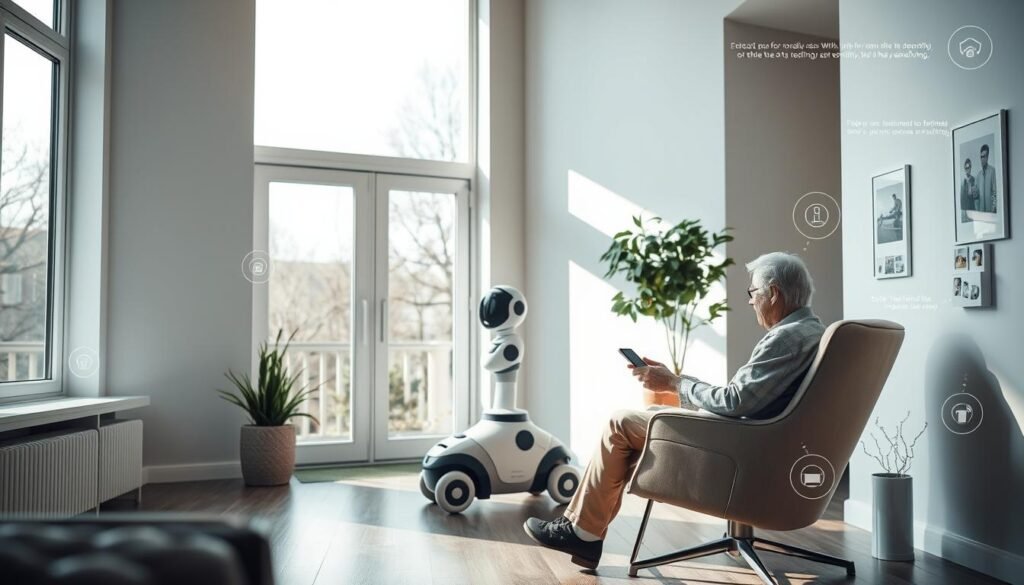
Wearables and Multi-Sensor Monitoring Systems
Lightweight devices now track vital signs through wristbands or clothing patches. One study found these tools reduce emergency room visits by 22% through early detection of irregular heart rhythms. Systems analyze 17 daily activities – from meal patterns to sleep quality – spotting changes that might indicate emerging issues.
Researchers at UC San Francisco made a breakthrough:
“Our models can identify Alzheimer’s markers seven years before symptoms surface through subtle movement analysis.”
This predictive power lets caregivers address concerns during manageable stages.
AI-Enabled Tools for Daily Activity and Emotion Assessment
Non-invasive scanners now assess wellness through facial expressions and voice tones. A trial in Beijing showed 89% accuracy in predicting diabetes risk from tongue coloration analysis. These monitoring methods eliminate stressful blood tests for routine checks.
Key benefits include:
- Real-time alerts about dehydration risks or medication misses
- Custom reports helping families understand changing needs
- Discreet sensors that respect personal space while ensuring safety
By combining multiple data streams, these systems create personalized care plans. They help people enjoy greater independence while having backup support when required.
Addressing Challenges and Concerns in AI-Powered Senior Care
While innovative tools show great promise, addressing key barriers remains essential for building trust. Three critical areas demand attention: data protection, algorithmic fairness, and user confidence.

Privacy, Data Security, and Regulatory Considerations
Care facilities face mounting pressure to safeguard sensitive information. Current laws haven’t fully adapted to handle the 37% annual growth in medical data collection. A 2019 Science study revealed alarming bias in treatment algorithms affecting Black patients due to flawed historical data.
Leading hospitals now use military-grade encryption for patient records. Staff receive mandatory training on ethical data handling practices. These measures help maintain trust while enabling better care coordination.
Mitigating Bias and Facilitating Adoption
Developing inclusive systems requires diverse input during the design phase. Teams at Johns Hopkins reduced diagnostic errors by 28% after expanding their training datasets to represent various communities.
Simple strategies improve acceptance:
- Weekly tech workshops at community centers
- Clear explanations of data usage policies
- Family involvement in setup processes
Regular feedback loops let users shape updates. This approach reduces burnout among care teams while ensuring tools meet real needs. The goal? Create solutions that feel like helpful partners rather than intrusive monitors.
Conclusion
Balancing innovation with empathy defines modern aging solutions. When care teams and tech developers collaborate, they create tools that amplify human connection rather than replace it. This partnership helps residents maintain independence while giving families peace of mind.
Successful technology adoption hinges on respecting personal preferences. Simple interfaces and clear privacy controls build trust with older users. Facilities report better staff retention when smart systems handle routine tasks, reducing burnout.
The real win? Quality life improvements through thoughtful design. Voice-activated reminders support medication schedules, while discreet sensors alert caregivers about potential risks. These innovations work best when paired with regular human check-ins.
Looking ahead, the focus remains on creating adaptable solutions for our aging population. By prioritizing dignity and choice, modern tools empower people to thrive in their preferred environments. The future shines brightest when compassion guides technological progress.
FAQ
How does technology help seniors maintain independence at home?
Advanced tools like wearables and smart home systems track daily activities, monitor vital signs, and detect emergencies. Brands like Philips Lifeline offer fall detection, while Amazon Alexa enables voice-controlled lighting or reminders. These innovations reduce reliance on caregivers while promoting safety.
What safeguards protect seniors’ privacy with remote monitoring?
Reputable providers like Apple and Google use encryption and strict access controls. Data is anonymized where possible, and users can customize permissions. Regular audits ensure compliance with HIPAA and GDPR standards, balancing safety with confidentiality.
Are older adults comfortable adopting these new systems?
Training programs and intuitive design—like GrandPad’s simplified tablets—ease adoption. Studies show gradual integration, coupled with caregiver support, increases acceptance. Many platforms prioritize user-friendly interfaces to accommodate varying tech literacy levels.
Can virtual companions reduce loneliness in care facilities?
Yes! Tools like ElliQ by Intuition Robotics engage users with conversation, reminders, and activities. Research indicates such companions improve mood and social connectivity, especially when combined with scheduled family video calls via platforms like Zoom.
How do caregivers benefit from AI-powered solutions?
These tools automate tasks like medication tracking with MedMinder or appointment scheduling via CareZone. This reduces burnout by streamlining workflows, allowing caregivers to focus on personalized support and emotional connections with residents.
What steps prevent bias in health assessment algorithms?
Developers like IBM Watson Health use diverse training datasets and routine audits. Partnerships with institutions like Mayo Clinic ensure tools account for age-related conditions, minimizing disparities in care recommendations for the aging population.
Share this content:

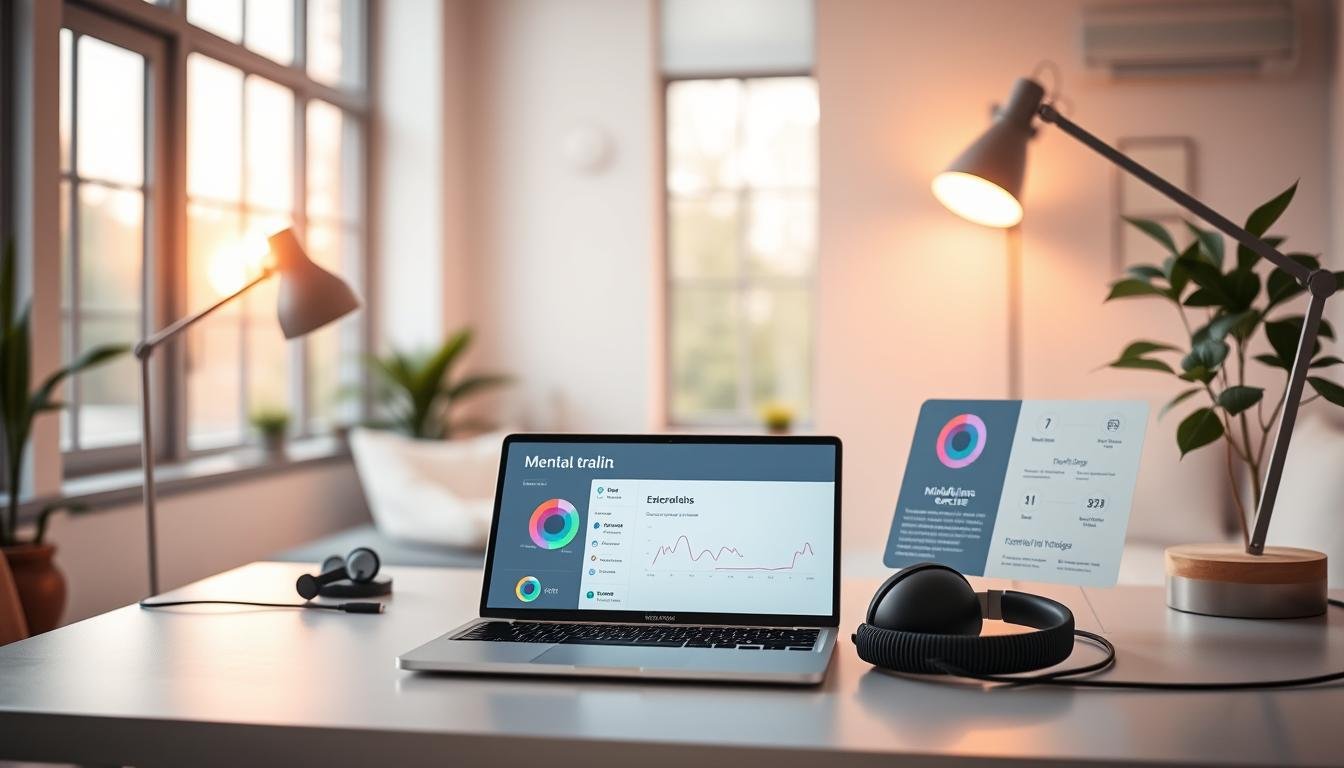
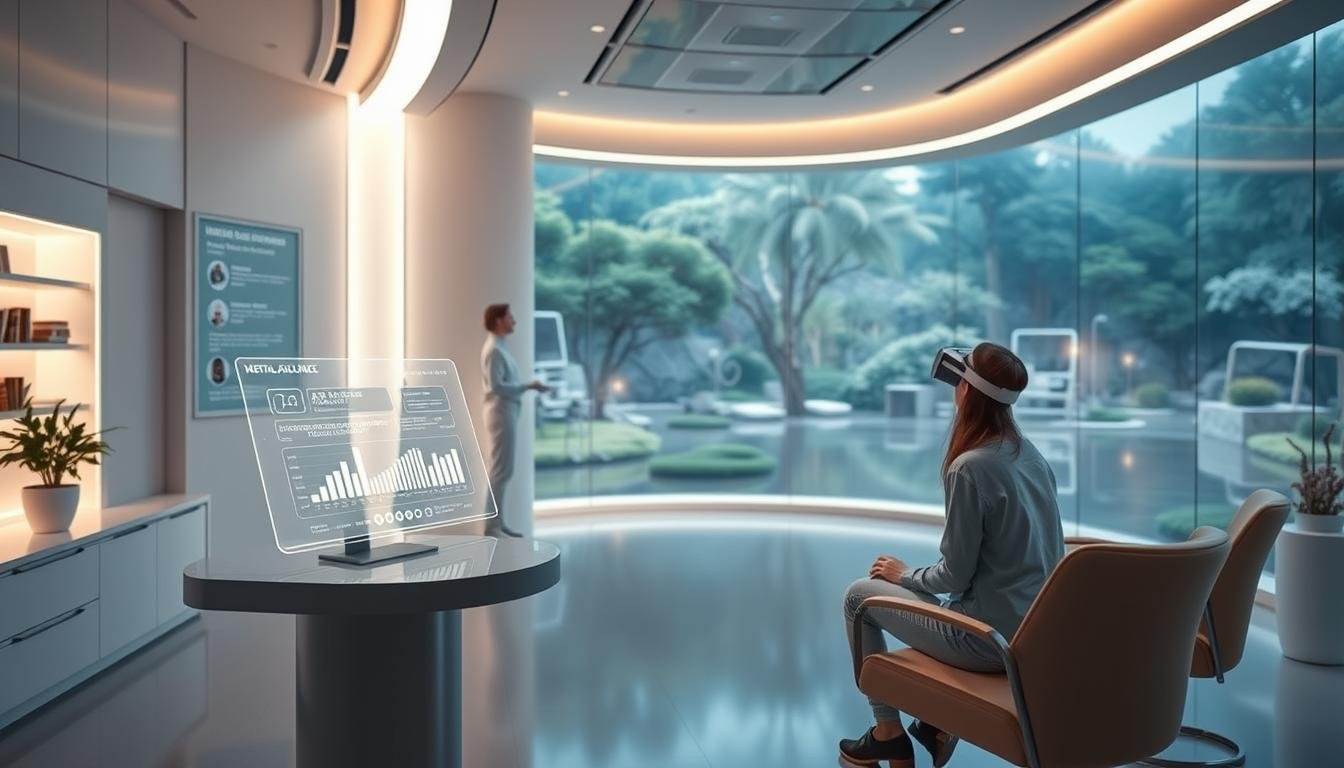
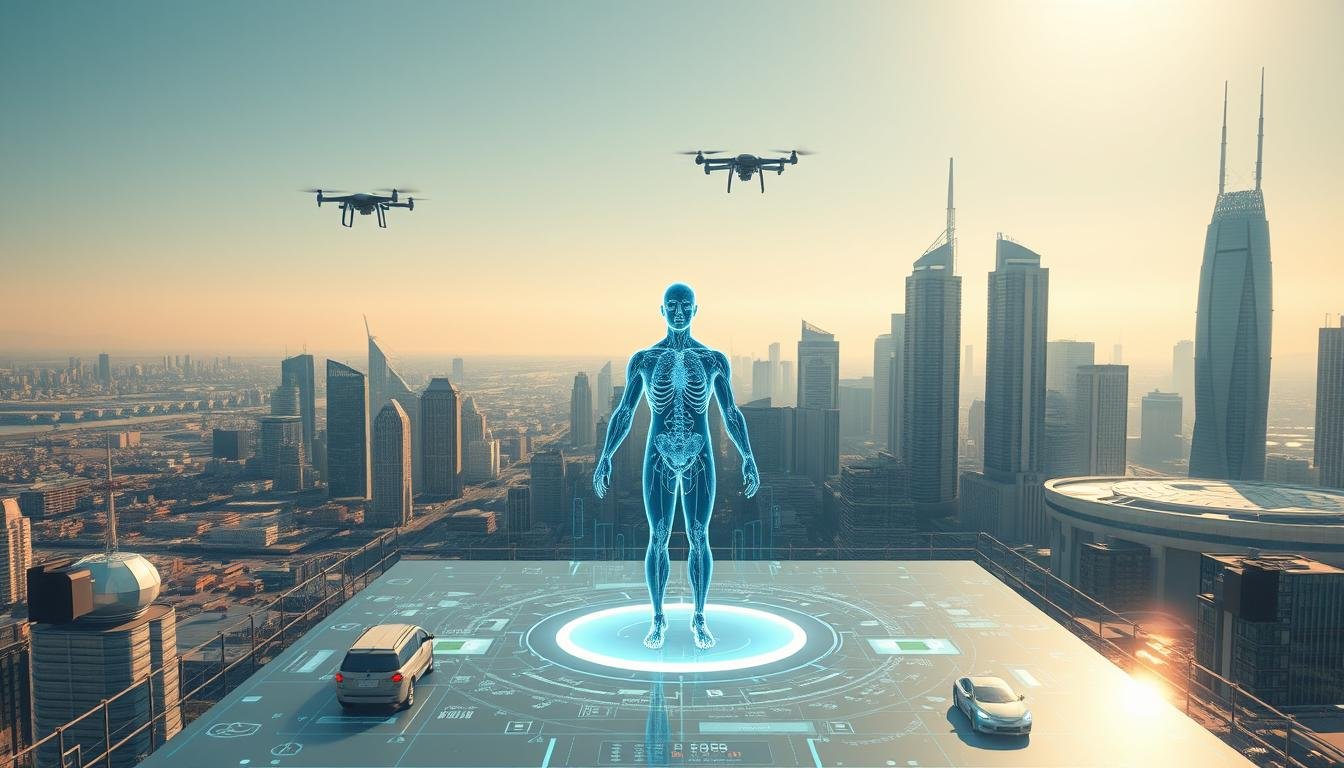
Post Comment